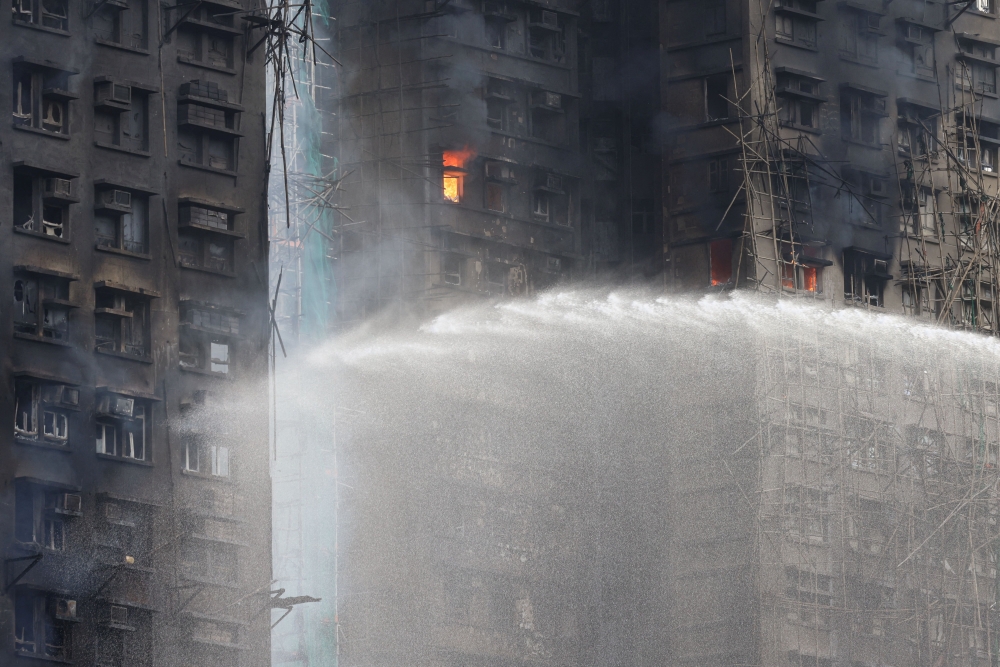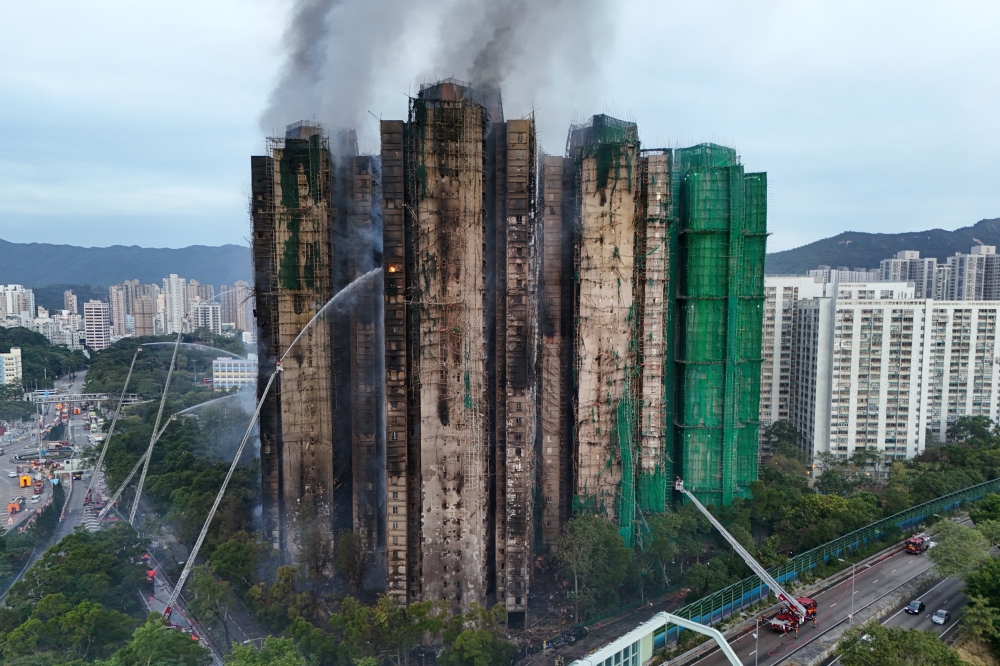
What we know about the Tai Po tragedy, Hong Kong’s worst residential fire in decades

Fire burns bamboo scaffolding across multiple buildings at the Wang Fuk Court housing estate, in Tai Po, Hong Kong, China, on November 26, 2025. — Reuters pic
Thursday, 27 Nov 2025 3:29 PM MYT
HONG KONG, Nov 27 — A catastrophic fire that engulfed seven residential towers in Hong Kong’s Tai Po district has killed at least 51 people and left hundreds missing, marking the city's deadliest residential blaze in over 60 years.
With many questions still unanswered, here’s a breakdown of what is known about the incident.
How did the fire start and spread so quickly?
The exact cause is still unclear, but authorities have confirmed the fire started on the bamboo scaffolding of one of the buildings, Wang Cheong House, which was undergoing renovation.
The fire's rapid and intense spread is being blamed on a combination of factors.
Hong Kong’s Secretary for Security, Chris Tang, said the "protective netting, waterproof cloth and plastic sheeting" on the scaffolding burned "far more intensely" than compliant materials should, according to a Bloomberg report.
Fire officials also noted that Styrofoam found at the scene accelerated the blaze. Compounding the issue, residents reported that fire alarms failed to go off, with many only alerted when a security guard knocked on their doors.

Fire burns inside a window of the damaged towers of the Wang Fuk Court housing estate, where a major fire engulfed bamboo scaffolding across multiple blocks, killing at least 44 people and leaving almost 300 missing, in Tai Po, Hong Kong, China, on November 27, 2025. — Reuters pic
What about the building complex?
The Wang Fuk Court complex, built in the 1980s as government-subsidised housing, is a densely populated estate estimated to house nearly 5,000 people.
Like many Hong Kong estates, it is common for multi-generational families to live in a single small apartment. The seven affected towers were undergoing a lengthy renovation and were covered in bamboo scaffolding and mesh.
Is bamboo scaffolding common in Hong Kong?
Bamboo scaffolding has been used in Hong Kong for over a century and remains very common.
It is considered more agile and cost-effective than metal scaffolding for the city's dense urban environment.
However, the government has recently moved to encourage the use of metal scaffolds due to safety concerns, particularly bamboo's high combustibility.
What have the authorities done?
Hong Kong's leader, John Lee, has launched a task force to investigate the blaze and has ordered city-wide inspections of all renovation sites.
In a major development, police have arrested three senior figures at an engineering company on suspicion of manslaughter.
Both Lee and Chinese President Xi Jinping have expressed condolences to the victims' families.

A drone view shows flames and thick smoke rising from the Wang Fuk Court housing estate during a major fire in Tai Po, Hong Kong, China, on November 27, 2025. — Reuters pic
Are such fires common?
While high-rise fires do occur in Hong Kong, major fatalities are rare. Before this incident, the deadliest residential blaze in recent decades was in 1996, when 41 people died.
This week's fire is the city's worst since a tenement building fire in 1962 also killed 44 people.
What will happen to the residents?
This is now a major crisis. With seven of the eight towers in the complex affected, thousands of residents have been left homeless.
The government has opened temporary shelters and is coordinating with charities and the hotel industry to provide short-term accommodation.
However, finding permanent housing for so many people in Hong Kong’s notoriously tight and expensive housing market will be an immense challenge.
No comments:
Post a Comment